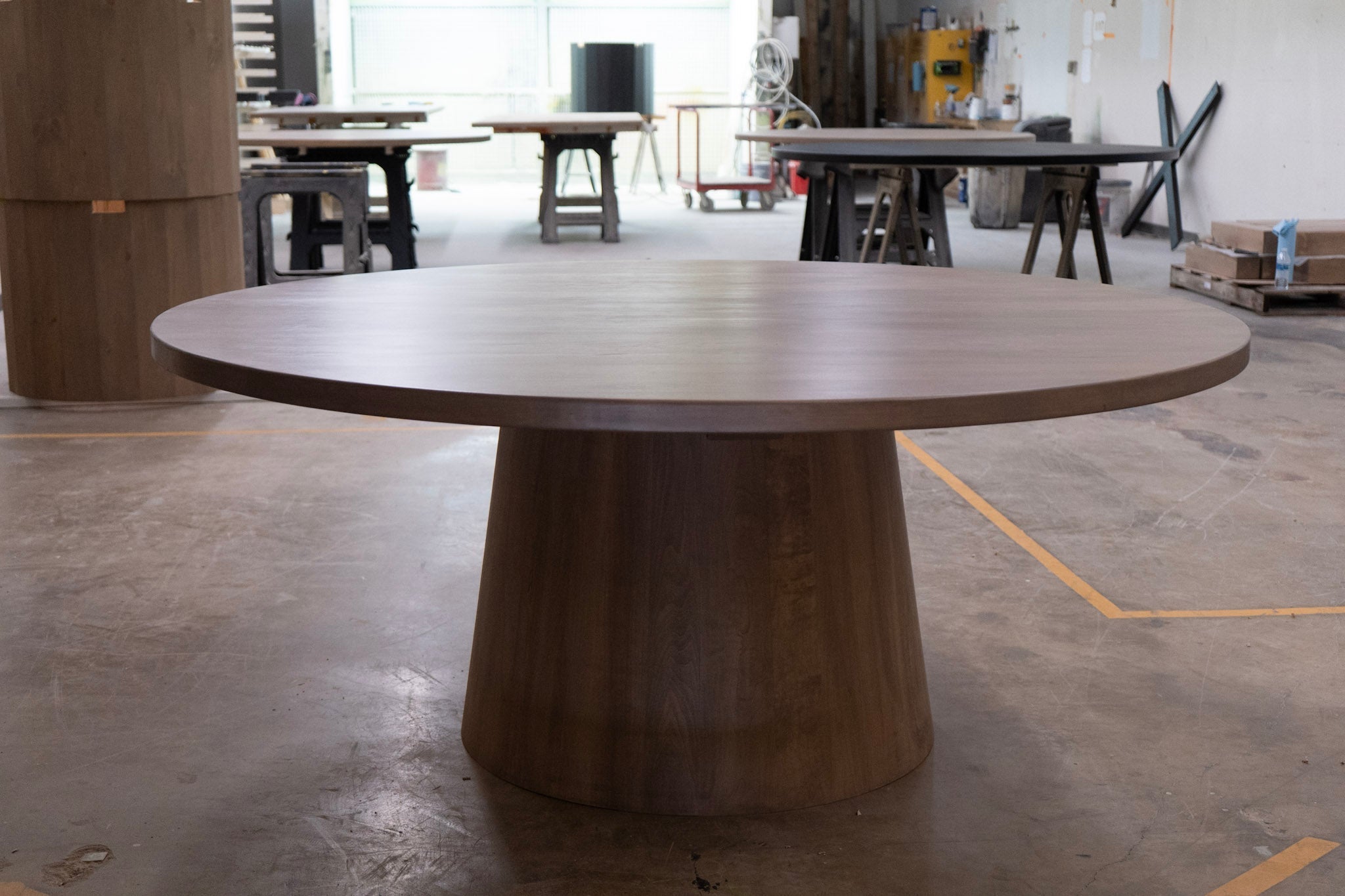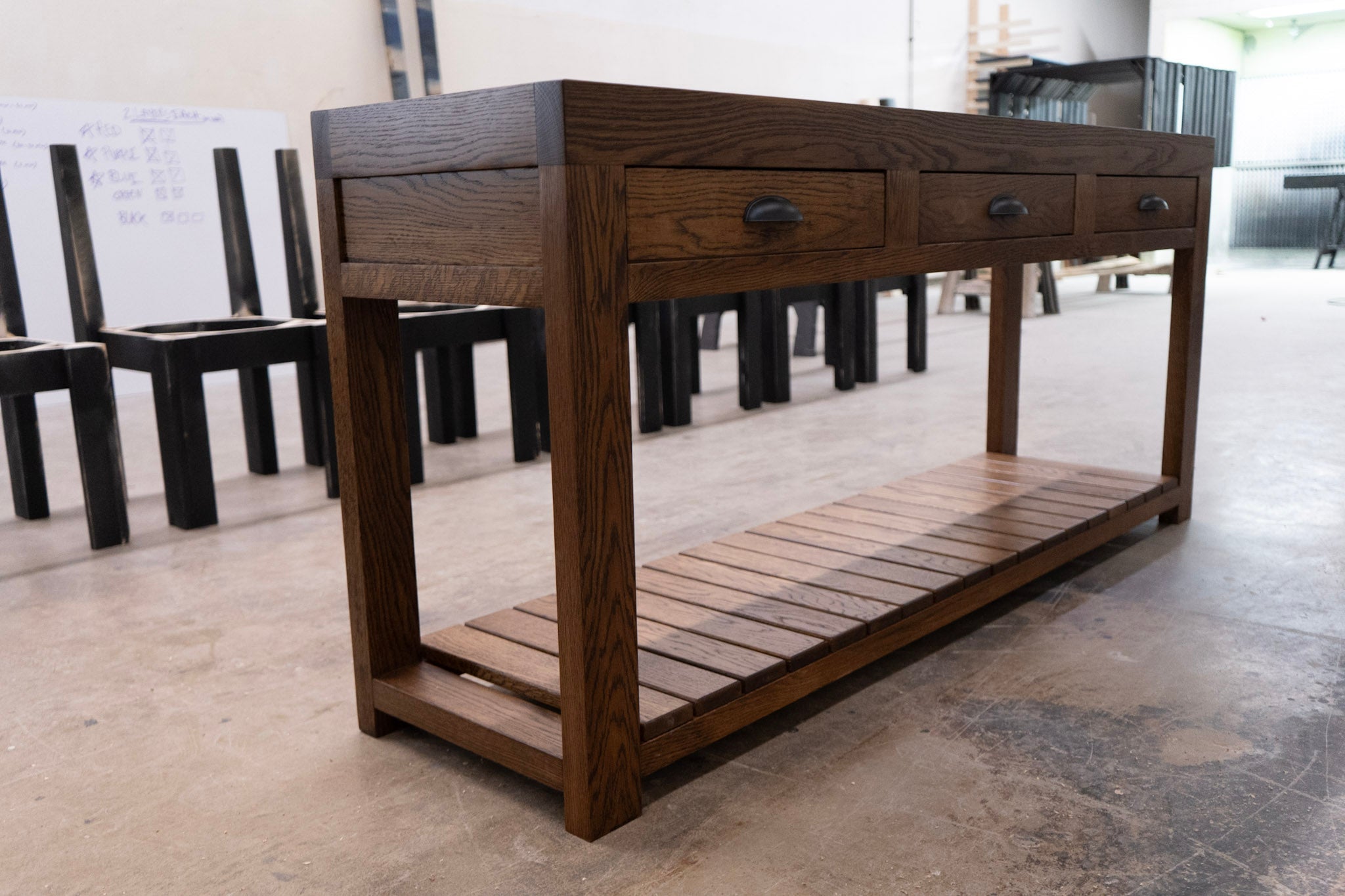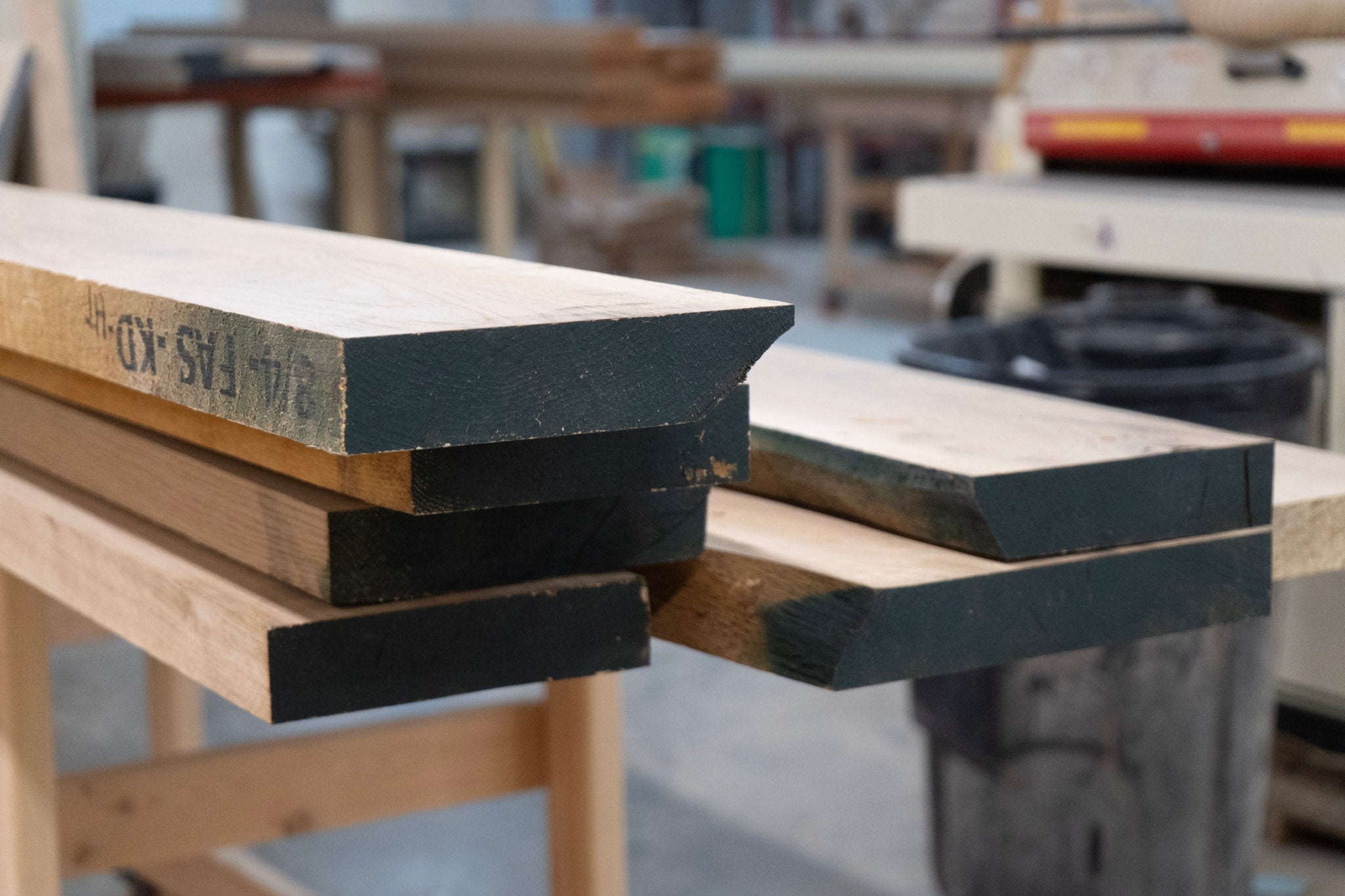Behind the Build: Crafting Our Spider Metal Base

When it comes to custom furniture, the base is just as important as the top. It provides not only stability, but also style — the foundation that sets the tone for the entire piece. One of our most striking builds was a Spider Metal Base created to hold a 78” marble top. Here’s how we brought it from concept to completion.
Step 1: From Vision to 3D Render
It all began with a conversation with the client. After discussing the ideal sizing and proportions they had in mind, we created a 3D render using CAD software. This digital model helped us visualize the final design and make sure every angle and measurement was precise.

From there, we used our CNC machine to cut out templates — a crucial step to ensure that what looks right on screen translates correctly into real life.

Step 2: Building the Inner Frame
The main structure started with 4x2 rectangular steel tubing. Using our templates, we traced and cut the pieces to size.
We then welded two X-shapes, joining them together with a half-lap technique. This method, where notches are cut so that the pieces interlock like puzzle pieces, increases stability and strength — ensuring that the spider frame can easily support the heavy marble top.


Step 3: Adding the Flat Bar Trim
Once the core frame was solid, we moved on to the details that define the spider base’s look.

We added flat bar trim pieces along the edges:

-
These create a sense of depth and visually highlight each edge.
-
They also cap off the hollow tubing, giving the frame a seamless, finished appearance.
This step is one of the most time-intensive parts of the build. It involves a back-and-forth process:

-
Cutting the flat bar to size
-
Bending it to contour perfectly with the spider outline
-
Pulling it away from the base for welding
-
Grinding the welds smooth
-
Reattaching to the frame

Though labor-heavy, it ensures that every inside corner is smooth and clean.

Step 4: Sanding and Testing by Hand
With the frame fully welded, we begin the fine-tuning phase. Welding often leaves behind tiny sparks — small metal particles that can stick to the surface and feel rough, almost like grains of salt, once painted.
To avoid this, we:
-
Run our bare hands along every edge to feel for imperfections.
-
Use a sander to smooth everything down one more time.
This step ensures that once finished, the base will look and feel flawless.


Step 5: Professional Powder Coating
The final step in finishing the spider base is powder coating, a process that gives the metal frame both durability and a sleek, lasting finish. Here’s how it works in detail:
-
Surface Preparation:
Before any coating is applied, the metal is thoroughly cleaned and sometimes sandblasted to remove dirt, oils, or oxidation. This ensures the powder will adhere evenly and the finish will be smooth. -
Applying the Powder:
Using a spray gun with an electrostatic charge, the powder coating is sprayed onto the frame. The electrical charge causes the powder particles to cling tightly to every surface, including corners and recesses. Multiple angles may be sprayed to make sure the coverage is complete. -
Curing in the Oven:
Once the powder is applied, the frame is placed in an industrial oven at a controlled temperature (typically around 400°F / 200°C). The heat melts the powder, allowing it to flow, level out, and chemically bond to the metal surface. -
Durability and Finish:
The result is a finish that is extremely strong, chip-resistant, scratch-resistant, and UV stable, far superior to traditional spray or oil-based paints. It also leaves a smooth, visually flawless surface with no lingering odor. -
Custom Options:
Powder coating can create matte, satin, gloss, or textured finishes, and can even incorporate metallic or custom colors to perfectly match your vision.
The result? A finish that is extremely durable, smooth to the touch, and free from odor — unlike spray paint or oil-based finishes.

Step 6: Final Inspection and Assembly
After a few days at the powder coater, the frame is ready for pickup. Back at our workshop, we set it up and inspect it one last time to ensure it matches our standards.
The finished spider base is strong, sculptural, and elegant — a perfect match for the 78” marble top it was designed to support.


Why It Matters
This project shows what sets custom furniture apart: time, care, and attention to detail. From the 3D render to the final oven-baked finish, every step ensures that the piece is not just functional, but also a work of art.








Leave a comment